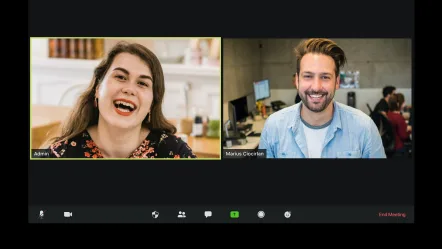Here's the perfect interview template for software engineers!

David Vandegrift, CTO of 4Degrees, shares his ideal template for hiring the best technical talent.
A company's most valuable asset is its ability to attract and retain top talent. The people who work for the company are the ones who make it great: they use their skills and imagination to create products that are innovative and useful.
The interview process should ensure you're bringing in the right people, as well as laying the groundwork for their future success at the company.
The process of hiring and interviewing candidates for engineering positions varies greatly across companies, industries, and even within individual organizations.
At 4Degrees, we've spend a lot of time refining our technical interview process and I would like to share some of what we've learned.
WHAT DOES BAD LOOK LIKE?
Technical interviews often fail because of bad structure: Companies don't know what they want, so they hold ad hoc interviews until a manager or committee gets a good feeling about the candidate. This approach has several immediate negative consequences:
Too many interviews often leads to this, where each subsequent interaction generates marginally less value but racks up costs both internally and with the goodwill of the candidate pool.
The interviewers' reactions to what they see and feel may not be accurate perspective of what is good.
If your false negative rate is high, you will miss out on many qualified candidates. This often happens when the hiring process relies too heavily on consensus. The more interviews you conduct, the greater the chance that you will come across someone who simply doesn't fit for some reason.
Once the right interviews are established to assess specific qualities, the actual assessment methodologies themselves are the next major stumbling block. The tech industry is infamous for some wild interviews: questions about manhole covers, impromptu jogs leaving candidates sweating through their khakis, and bizarre coding environments that look like they were inspired by ’70s-era mainframe and terminal programming. Some of the common bad interview practices include:
Brainteasers are a great way to test creativity and out-of-the-box thinking. It has been proven that brainteasers lead to better interview outcomes.
Whiteboarding:
Many companies use whiteboards and pseudocode to assess programming capabilities in job interviews, but this is not representative of the actual work engineers do.
Knowledge quizzes:
In my opinion, if you are more knowledgeable about a language or framework, then you will be able to use it better. However, I realize that most engineering work only requires a small amount of the total knowledge for a given technology. Additionally, if there is any missing knowledge, it is typically easy to look up with a quick Google search. Therefore, I believe that knowledge quizzes are not effective in filtering for good engineers.
Unrealistic situations:
While online coding tests and timed challenges are now commonplace for companies looking to hire engineers, these assessment methods do not give an accurate portrayal of what engineering work is really like.
Asking too much:
Companies often ask too much of their candidates as part of the process, which can exclude an enormous population of candidates who simply don’t have the resources to do that much work for free.
WHAT DOES GOOD LOOK LIKE?
It's important to remember that every company and situation is different, with specific requirements leading to a different "perfect" approach. No single process will be ideal for every hiring manager in every situation. Instead, it's crucial to carry a set of good principles into any given situation. Intention:
A good interview process is key to being successful in finding the right candidate. By thinking through what you are looking for and what you need to assess, you can design a process that will help you make the best decision.
Range:
While it’s important to keep the process concise, it’s equally vital to bring a bit of variety to the various interviews to get a range of readings on the candidate. At 4Degrees, every technical process includes one live assessment and one take-home assessment. The live assessment is kept under an hour and is framed as a collaborative exercise, like paired programming. It assesses the candidate’s thinking process and ability to work with others. The take-home assessment is designed to mimic a real task an engineer might do on the job, allowing us to get a better sense of your skills and abilities.
Assess the non-technical:
A successful engineer is not just a coder, but also collaborative, communicative, resilient, inventive, authentic, and committed.
THE IDEAL TEMPLATE
Every situation is different, and each one should be approached with thoughtfulness around the specific requirements of the role and the candidate. However, by combining a basic list of do’s and don’ts, we’ve managed to develop a good template for technical interviews at 4Degrees. This template typically gets us 80 percent of the way to a real-world process while allowing flexibility to adjust as needed.
1. Initial expectation-setting call:
A great way to start any process is with a 30-minute chat over the phone. This allows the hiring manager to learn more about the background of the 4Degrees and what we are looking for in the role. It also gives the candidate a chance to learn more about what we are looking for and share their own background. Having a casual chat over the phone for 30 minutes at the beginning of the process is beneficial for both the hiring manager and the candidate. The hiring manager can learn more about 4Degrees and what we are looking for in the role, while the candidate can learn more about the role and share their own background.
2. Live technical assessment:
The first formal step in the interview process is a 60-minute technical assessment, typically done via screen share. About 45 minutes of the interview are spent in an actual coding environment, with the rest set aside for introductions and questions from the candidate. The coding is meant to be collaborative, somewhat like a paired programming exercise. The coding tasks included are meant to be reflective of what someone would experience on-the-job, which often includes writing code from scratch as well as editing existing code.
3. Vision/Values alignment:
The second interview is another hour, this time focused on the non-technical. Specifically the vision, value and mission of the company. This interview is particularly valuable at companies that place a strong focus on the role of these artifacts within the company.
4. Take-home assessment
The penultimate step in the process is for the candidate to tackle a take-home assignment designed to replicate the on-the-job tasks they will be expected to do once hired. The assignment is meant to take the average candidate about three hours, with an additional hour given as buffer. To maintain fairness across applicants, the assignment is rigidly time-boxed.
5. Full-team interviews:
The last step in the interview process is a series of in-person (or video) interviews with the team. For 4Degrees, these interviews have traditionally included every member of the team (so three to five total interviews in one day). However, as we are quickly growing, it is no longer reasonable to include the full team. We’ve found that after about five hours the candidate’s performance in an interview can’t reasonably be expected to reflect their on-the-job performance. Therefore, these interviews are tailored to focus on any as-of-yet unanswered questions from earlier in the process, and have the least consistency across processes.
And that's why this process is the best way to find the right candidate! Our process is designed to find the best candidates for a wide variety of technical roles - so it will work great for you too!



















